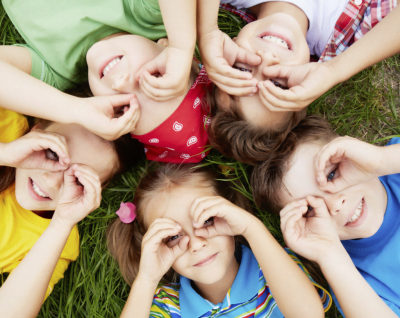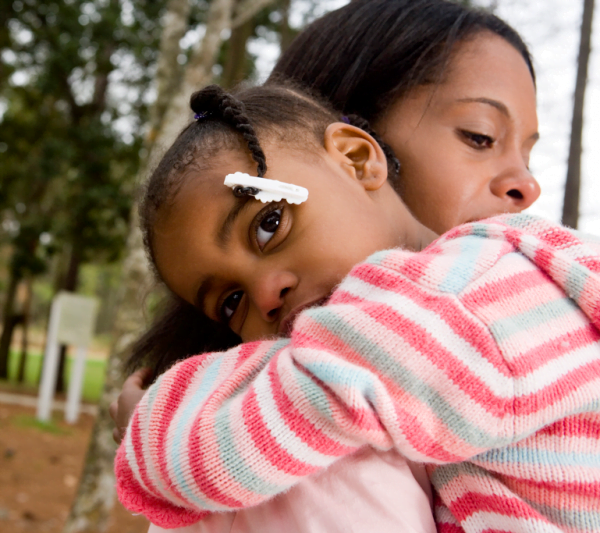Ages and Stages
All parents, including parenting youth, have questions about healthy child development and want to guide their children to become responsible, happy adults. This involves parents having discussions with their children about sexuality at an early age and as they grow. Parenting youth often need support to do this. Service providers are well positioned to provide this support.

Sexuality is not just sexual intercourse or activity. Sexuality includes:
- Gender roles, identities and sexual orientation.
- Body image.
- Relationships with others.
- How we grow and change over the years.
- Our bodies and how we reproduce.
- Personality, communication, expression, and values.
Sexual Development in Children
Most children go through the stages of sexual development in a similar pattern, but may be at different rates. Parents can talk to a health care provider like a doctor or public health nurse about a child or youth’s physical development or sexual behaviour .
Ages birth to 2 years
- Children learn about love and trust through touching and holding. Become responsive to physical touch and pick up nonverbal/verbal messages that begin to shape the child’s understanding of their own sexuality.
- Children explore their own body parts.
- Children have growing awareness of bodily functions e.g., toileting and the messages from parents and others about these functions.
- As speech and communication is learned, children can develop language to use correct names for body parts including their genitals.
- Children can experience genital pleasure.
Ages 3 to 4 years
- Gender identity develops (e.g., children begin to identify a sense of being male, female, both or neither).
- Body exploration with peers is common (e.g., playing doctor).
- Children may touch their own genitals for pleasure.

Ages 5 to 7 years
- Children are establishing a foundation of their gender identity shown by how they look, the name they use and the roles they explore through play.
- Body exploration is common.
- Children are aware of sex differences and reproduction e.g., if a family member is pregnant, they may want to know where babies come from.
- The media, as well as family members, influence their understanding of sex and gender.
Ages 8 to 12 years
- Children begin to notice the physical changes of puberty (e.g., pubic hair, breast development, menstruation).
- Peer group has an increased influence on child’s self-image including their understanding of sexuality.
- Main attachments are still often to members of their own gender.
- May masturbate.
- May begin to menstruate (have periods).
- May start to have nocturnal emissions (wet dreams).
- Children begin to separate from parents wanting more independence.
Ages 13 and older
- Production of sex hormones lead to continued physical and emotional changes.
- Greater interest in sexuality, experiencing sexual thoughts and feelings. Teens experience sexual fantasies as a way of preparing for and understanding their sexual roles.
- May masturbate.
- May have sexual attraction or experience with someone of any sex or gender as sexual orientation is explored.
What Children and Youth Need to Know
For children and youth to develop healthy relationships and boundaries, they need to know the following:
- Correct names of body parts (penis, testicles, anus, scrotum, vulva, labia, vagina, clitoris, uterus, ovaries). This is a critical step to respecting the body, normalizing sexual health and building self-care skills.
- Where babies come from (e.g., a sperm cell joins with an ovum/egg through sexual intercourse).
- A baby grows in the uterus and is born through the vagina (or C-section if needed).
- Practical knowledge (e.g., “Where are your private parts?”). This knowledge is needed as soon as possible because this can potentially protect children from sexual abuse.
- Personal boundaries (e.g., “My body is mine and my body is private. I do not ask to look at others’ private parts and I do not show mine to others”).
- Not to pick up condoms.
- Family and cultural beliefs and values about sexuality (e.g., what age to start dating, and the rationale for this).
- Basics about menstrual periods, erections and wet dreams (nocturnal emissions) as normal and healthy processes.
- Continued support building and maintaining personal boundaries, such as when to share information.
- Introduction of how their bodies develop and change during puberty.
- How peers, media and culture impact self-image and sexuality.
- Safety rules about using the internet, such as social media sites.
- Information about birth control and sexually transmitted infections (STIs) and how to access sexual health services.
- How to recognize dating relationship problems and end unhealthy relationships safely.
Practical Strategies for Talking about Sexuality
- Speak to children and teens regularly – about sexuality and other topics.
- Don’t feel discouraged if children and youth say they don’t want to learn about sexuality. Keep trying.
- Provide correct information. Sharing false or made up information to ‘protect’ children is not helpful, reduces trust and means more explaining later!
- Be practical, concrete and honest.
- Tell children what they want to know, using words they can understand.
- Along with facts, talk about feelings and relationships.
- Use teachable moments (e.g., TV shows, music or social media as a way to start talking).
- Look for answers to questions at the library or on the internet – with the child or youth.
- Help children learn from both good and bad experiences.


